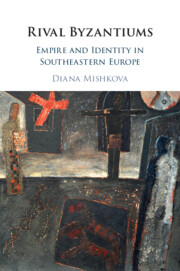References
Published online by Cambridge University Press: 01 December 2022
Summary

- Type
- Chapter
- Information
- Rival ByzantiumsEmpire and Identity in Southeastern Europe, pp. 320 - 349Publisher: Cambridge University PressPrint publication year: 2022

